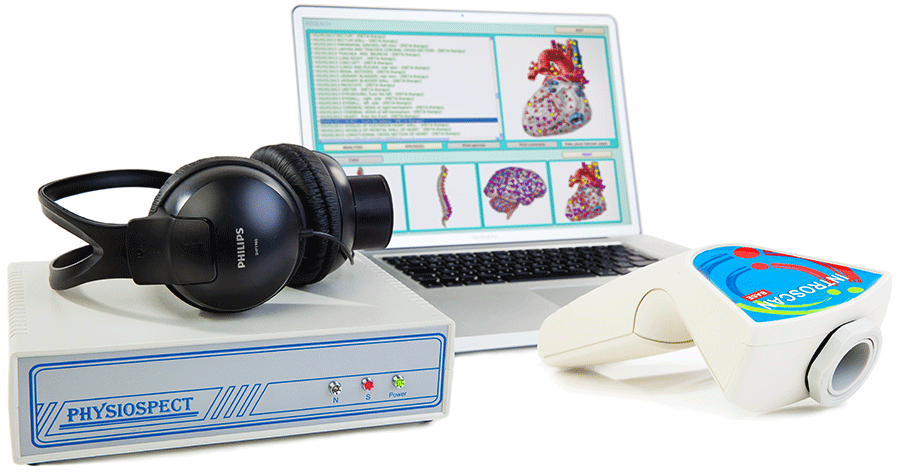A.D. Sluzky, V.M. Vagulin
Today the world faces a constant trend of a growing rate of mortality caused by occlusive vascular diseases, especially by cerebrovascular disorders which are in the third place among death causes. On the one hand the trend is caused by a growing number of elderly and aged patients. On the other many men even already at 45 have arteriosclerosis damage of main head arteries =, causing the need for a dispensary observation.

The most simple and at the same time informative method of noninvasive diagnosis of occlusive damage of peripheral vessels appeared to be the NLS-method with has been used in clinical practice not long since. The first NLS devices equipped with analog trigger sensors, operating in 1.4 GHz frequency mode and used in clinical practice since the late 90-s have not their importance yet. They can determine the condition of certain sections of the main vessels in the lower limbs and that of the brachiocephalic vessels.
Not only can the condition of the vessels but also of the valvular system of deep venis can be studied. 102 patients were examined in 19997-1998 to detect valvular insufficiency of deep venis affected by varicosis. The patients were from 21 to 67 years old. The examined patients included 25 men (24.5%) and 77 women (74.5%). The study was carried out by means of the Oberon devices using a 1.4GHz analog trigger sensor. In 32 patients a valvular insufficiency of the femoral vein was detected, in 44 patients failure of both femoral and popliteal venis. NLS allows s to asses the condition of the valvular system of deep venis in low limbs on a noninvasive and objective basis which is very important point for the surgery tactic to be selected, and can be used an alternative to phlebography analysis.
The NLS-signal spectral analysis method has no counterindications and in terms of informational content is comparable angiography. It cn be used to perform screening in the course of polyclinical examination with the view to detect early or latent forms of vascular pathology and also as a preliminary method of selecting patient for angiosurgical treatment, since according to some angiologists, angiography should only be performed on candidates for surgery pick up after a preliminary NLS investigation. However the method does not allow to asses bulk index of the bloodstream, because NLS does not allow to provide vessel's image and hence to measure the vessels diameter. This kind of information can be acquired with the help of Doppler system with 2D-imaging, that offer duplex and triplex scanning (the so-called Doppler chromatic charting).
The NLS-method was developed in the mid 90-s played an essential role in in vascular pathology diagnosis. The main advantage of the NLS-method was that differentiate vessels from nonvascular structures, arteries from venis and very accurately detect sings of disturbed vascular permeability caused by stenosis or occlusion of the vessel lumen by an atheroscierotic patch or thrombus which are generally not visible on screening in B-mode alone.
In addition the NLS-method allows to diagnose portal hypertension, the extant of its intensity, and permeability of Porto systemic bypasses. NLS is very sensitive in defining the extend of peripancreatic vessel involvement with pancreas cancer which is essentially important for choosing the approach for surgical treatment. NLS allows to detected the damage renal vessels (both veins and arteries), which is very important for the correct choice of a hypotensive drug at arterial hypertension. Some efficient hypertensive drugs, i.e. inhibitors of angoitensin-convering enzyme (ACE) such as capoten, enalapril, berliptil, cet., became very popular lately, but they have counter-indications at renal artery stenision. So physicians should bear in mind that checking for stension is a must before prescribing this kind of medicine. NLS-method is likely to be the choice method in such cases.
The NLS-method is indispensable fro differential diagnostics of benign and malignant hepatic diseases. Its sensitivity is comparable with the potential of conventional or digital angiography and computer assisted amplified tomography. In addition, the NLS-method is much cheaper, simpler and more intelligible. In can be employed directly at the patient's bedside if required. The NLS-method can be used in ophthalmology to check ocular hemodynamics before or after surgical intervention, in obstetrics to detect the disturbed blood current in umbilical cord arteries with a view to diagnose a retarded fetus development and predict a negative perinatal produce.
Yet another potential of NLS method lies in cranial scanning which allows to detect intracranial hematomas, ancurisms, cysts and tumors in the encephalon. These are far from potential of the NLS method.
Summing up, the NLS-method is one of the most dynamic techniques and within the next few years it is bound to bring some new discoveries.
